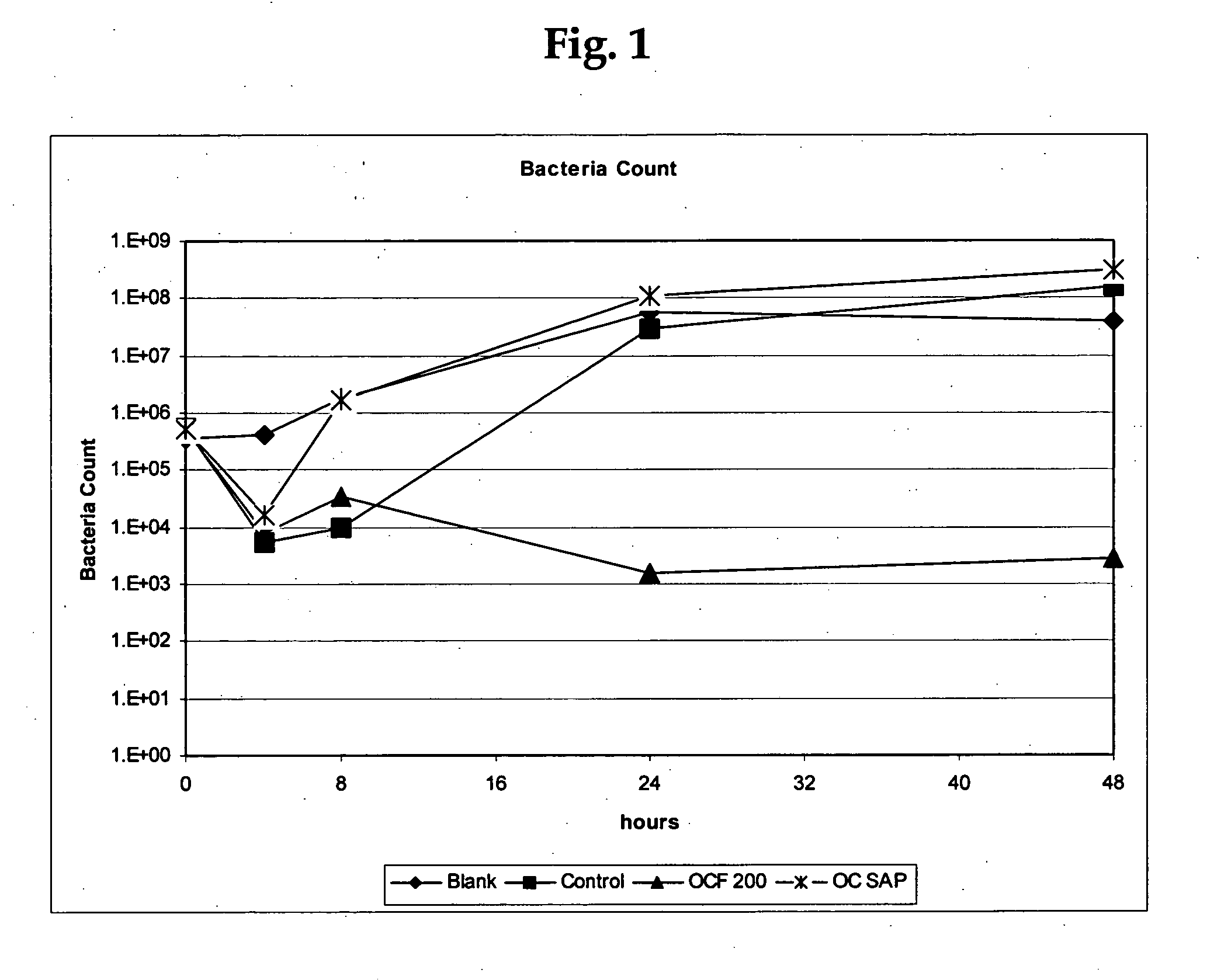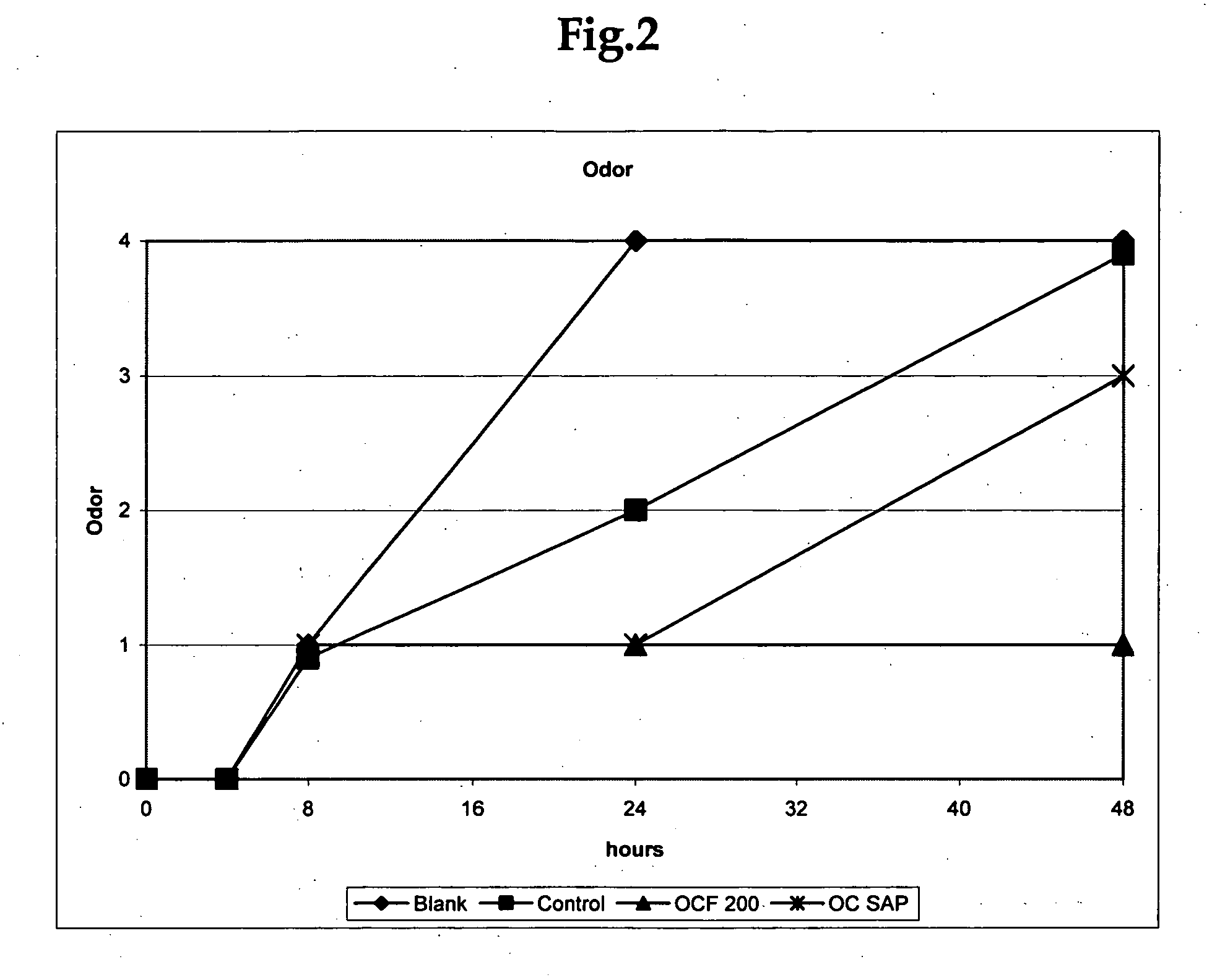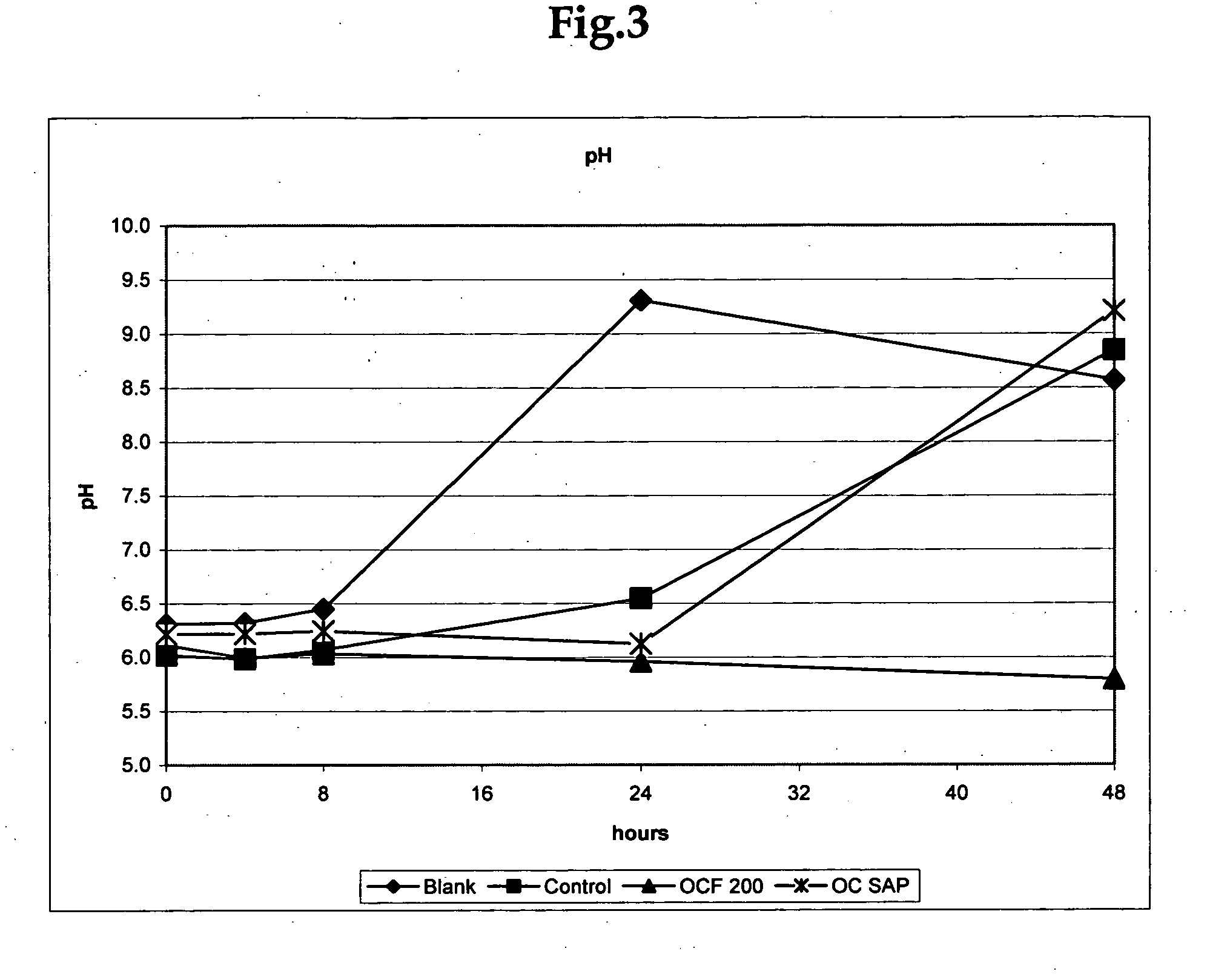Cellulosic fibers with odor control characteristics
a technology of odor control and cellulosic fibers, applied in the field of cellulosic fibers, can solve the problems of odor-trapping efficiency loss, odor-absorbing particles losing odor-trapping efficiency, and dermatitis, etc., and achieves low cost, inhibit odor, and maintain odor-inhibiting activity over extended periods.
- Summary
- Abstract
- Description
- Claims
- Application Information
AI Technical Summary
Benefits of technology
Problems solved by technology
Method used
Image
Examples
examples
[0079] This example illustrates a representative method for making odor-inhibiting cellulosic fibers in sheeted roll form in accordance with an embodiment.
[0080] Four samples of odor-inhibiting formulations containing 10 weight % of various odor-inhibiting agents in different liquid carriers were prepared as follows: [0081] Formulation A: the odor-inhibiting agent was urease inhibitor phenylphosphorodiamidate (obtained from Alfa Aesar, Ward Hill, Mass.); the liquid carrier was polypropylene glycol. [0082] Formulation B: the odor-inhibiting agent was biocide 4-cholro-3,5-dimethylphenol (obtained from Aldrich, Milwaukee, Wis.); the liquid carrier was triacetin (obtained from Vitusa Products Inc., Berkeley Hts., N.J.). [0083] Formulation C: the odor-inhibiting agent was biocide Triclosan (obtained from Essential, Buford, Ga.); the liquid carrier was triacetin (Eastman Chemical Company, Kingsport, Tenn.). [0084] Formulation D: the odor-inhibiting agent was hydrogen peroxide (obtained f...
PUM
| Property | Measurement | Unit |
|---|---|---|
| weight % | aaaaa | aaaaa |
| thickness | aaaaa | aaaaa |
| thickness | aaaaa | aaaaa |
Abstract
Description
Claims
Application Information
 Login to View More
Login to View More - R&D
- Intellectual Property
- Life Sciences
- Materials
- Tech Scout
- Unparalleled Data Quality
- Higher Quality Content
- 60% Fewer Hallucinations
Browse by: Latest US Patents, China's latest patents, Technical Efficacy Thesaurus, Application Domain, Technology Topic, Popular Technical Reports.
© 2025 PatSnap. All rights reserved.Legal|Privacy policy|Modern Slavery Act Transparency Statement|Sitemap|About US| Contact US: help@patsnap.com



